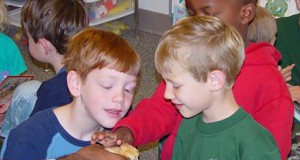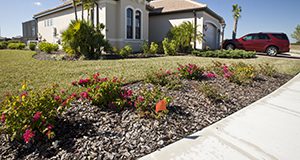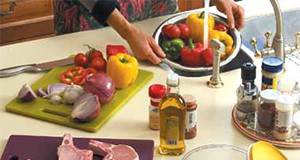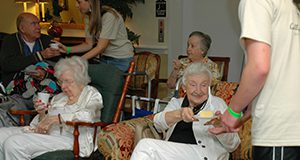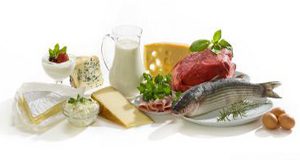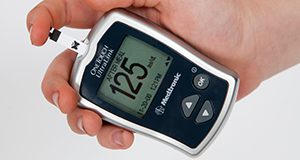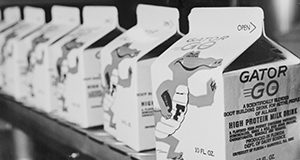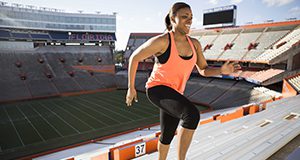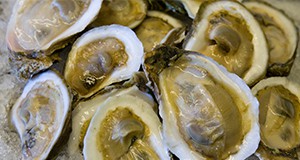School-based programs provide an opportunity to youth who would not be able to participate in traditional 4-H club offerings otherwise. If you want to expand your 4-H program in diversity, subject matter, and/or number of youth reached, school-based programming may be the solution for you. This 6-page document discusses school-based programs, differences between school-based programming and traditional club programming, reasons to start school-based programs, ways to work with school sites, and enrollment for school-based program youth. It is part of the 4-H 101 Fact Sheet series. Written by Vanessa Spero-Swingle and Susan Munyan, and published by the UF/IFAS 4-H Youth Development Department, April 2018.
http://edis.ifas.ufl.edu/4h389
Category: Families & Consumers
Enfermedad Renal Cronica (ERC): Una guia de alimentos can alto contenido de fibra
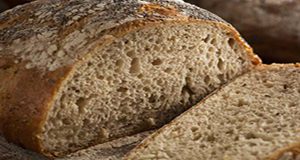
Vivir con la enfermedad renal crónica (ERC) presenta muchos desafíos, y la dieta es uno de ellos. Las personas con ERC pueden tener dificultades para consumir suficientes alimentos ricos en fibra al seguir las otras recomendaciones de dieta para la ERC..
This is the Spanish-language version of FS305, CKD: A Guide to Higher Fiber Foods. Written by Wendy J. Dahl and published by the UF/IFAS Department of Food Science and Human Nutrition, April 2018.
http://edis.ifas.ufl.edu/fs309
Alimentos en pure: Postres de lenteja
Una dieta en puré puede ser recomendada para personas con problemas para tragar. Es una dieta que requiere que los alimentos sean mezclados o procesados para obtener una textura suave, similar a un pudín..
This is the Spanish-language version of FS306, Pureéd Foods: Lentil Desserts. Written by Wendy J. Dahl and published by the UF/IFAS Department of Food Science and Human Nutrition, April 2018.
http://edis.ifas.ufl.edu/fs310
Prevencion de Caidas: Soluciones para su hogar
Miles de adultos mayores se caen en su casa cada año. A medida en que uno envejece, su casa puede presentar algunos retos. Pero usted puede hacer cambios para que su casa cumpla con sus necesidades mientras reduce el riesgo de las caĺdas. This is the Spanish-language version of FCS2228/FY734, Fall Prevention: Solutions for Your Home. This 3-page document provides tips to help you reduce the risk of falls at home. Written by Leigh Ann Martin, Emily Minton, and Linda B. Bobroff, and published by the UF/IFAS Department of Family, Youth and Community Sciences, revised January 2018.
http://edis.ifas.ufl.edu/fy858
La Dieta y la Salud del Cerebro
Seguir una dieta saludable proporciona muchos beneficios a lo largo del ciclo de la vida. Mantener buenos hábitos de alimentación a medida que envejecemos puede ser especialmente útil para preservar la salud cognitiva―la capacidad de recordar, aprender y tomar decisiones.
This is the Spanish-language version of FSHN17-9/FS304, Diet and Brain Health. This 4-page document provides tips for healthful eating that may help to maximize brain health in older adults. Written by Wendy J. Dahl and published by the UF/IFAS Department of Food Science and Human Nutrition, April 2018.
http://edis.ifas.ufl.edu/fs307
Vida Saludable: Use sus medicinas de una manera segura
Las medicinas nos pueden hacer sentir mejor y mejorar nuestra salud, pero si no las usamos correctamente nos pueden hacer sentir peor o hasta causarnos problemas de salud mayores. This is the Spanish-language version of FCS8594/FY667, Healthy Living: Use Your Medicines Safely! This 5-page document provides tips to help you use your medicines safely. Written by Paulina Wittkowsky, Linda B. Bobroff, and Emily Minton, and published by the UF/IFAS Department of Family, Youth and Community Sciences, revised February 2018.
http://edis.ifas.ufl.edu/fy668
Elder Nutrition
Older Floridians, their families, and communities face many issues related to aging. This 8-page fact sheet focuses on the way aging affects nutrition and diet, and choices that older adults can make to improve or maintain their health and well-being as they age. Written by Linda B. Bobroff and Martie Gillen, and published by the UF/IFAS Department of Family, Youth and Community Sciences, revised March 2018.
http://edis.ifas.ufl.edu/fy628
La Proteina y El Adulto Mayor
La proteína es un nutriente que provee energía a nuestro cuerpo y está involucrado en muchas funciones vitales como el reparo, mantenimiento y buen funcionamiento del sistema inmunológico.
This is the Spanish-language version of FSHN17-2/FS290, Protein and the Older Adult. This 3-page document describes the nutritional characteristics and requirements of protein in older adults. Written by Wendy J. Dahl and published by the UF/IFAS Department of Food Science and Human Nutrition, April 2018.
http://edis.ifas.ufl.edu/fs308
Swimmer's Itch (Cercarial Dermatitis)
Learn how to swim safely and avoid this itchy skin rash in this 3-page document written by Emma N. I. Weeks and Katherine Sayler and published by the UF/IFAS Department of Entomology and Nematology.
http://edis.ifas.ufl.edu/in1200
Symptoms and Treatment of Low Blood Glucose
Low blood glucose, also called hypoglycemia, can be life-threatening for people with diabetes. It can be caused by eating too little food, taking too much insulin or other diabetes medication, or being extra active. If left untreated, low blood glucose can progress to diabetic coma. Everyone with diabetes needs to know the symptoms of low blood glucose so they can take action right away. This 2-page fact sheet discusses preparation, symptoms, and treatment. Written by Linda B. Bobroff, and published by the UF/IFAS Department of Family, Youth and Community Sciences, revised February 2018.
http://edis.ifas.ufl.edu/fy521
Nutrition for Health and Fitness: Fiber in Your Diet
Whether you call it dietary fiber, fiber, or roughage, eating a diet rich in this food component is good for your health. This 8-page fact sheet provides tips on how to include foods with fiber in your diet. Written by Linda B. Bobroff, and published by the UF/IFAS Department of Family, Youth and Community Sciences, revised March 2018.
http://edis.ifas.ufl.edu/he697
Nutrition for Health and Fitness: Sodium in Your Diet
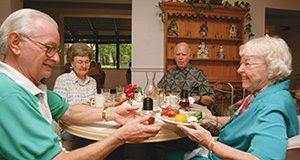
The foods you eat and the way you prepare and serve them affect the amount of sodium in your diet. This 5-page fact sheet Written by Linda B. Bobroff, and published by the UF/IFAS Department of Family, Youth and Community Sciences will help you evaluate your sodium intake.
edis.ifas.ufl.edu/he696
Pureed Foods: Lentil Desserts
A pureed diet may be recommended for individuals with swallowing problems; however, it can be challenging for those with a puréed diet to receive adequate protein, fiber, vitamins, and minerals. This 4-page document provides recipes made with puréed lentils, offering desserts that are both tasty and nutrient-dense. Written by Wendy J. Dahl and Alison O’Donoughue and published by the UF/IFAS Department of Food Science and Human Nutrition, March 2018.
http://edis.ifas.ufl.edu/fs306
Risk Management for 4-H Youth Development Work: Pre-Event Planning Guide and Matrix
This is the first publication in the Risk Management for 4-H Youth Development Work series. This series is intended to prepare UF/IFAS Extension county faculty, staff, volunteers, and youth for the important task of providing best practices in risk management strategies. This 5-page fact sheet discusses the matrix, levels of risk, probability that something will go wrong, modifications to the event or activity, and post-event assessment. Written by Dale Pracht, Paula Davis, Stefanie Prevatt, Janet Psikogios, Marilyn Norman, Kate Fogarty, and Jean Hink, and published by the UF/IFAS 4-H Youth Development Department, revised March 2018.
http://edis.ifas.ufl.edu/4h299
Budget Template for Home Canning
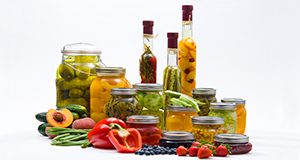
One in five US households cans fruits or vegetables in a home kitchen. If your household is one of them, you may want to know the full cost of the activity or how much money you are saving by doing it yourself. This 10-page fact sheet written by Kevin R. Athearn, Amarat Simonne, and Soohyoun Ahn and published by the UF/IFAS Food and Resource Economics Department presents a template designed to assist you in estimating the cost and potential returns from canning food at home.
http://edis.ifas.ufl.edu/fe1034
Assessment-based Pest Management of German Cockroaches
Assessment-based pest management emphasizes the importance of evaluating the intensity of a pest problem before treating the problem. This 10-page fact sheet written by F.M. Oi, E. Weeks, J. Jonovich, and D. Miller and published by the UF/IFAS Entomology and Nematology Department explains the strategy and includes a decision flow chart to provide an easy-to-follow overview on how a German cockroach problem can be assessed and successfully managed with specific guidance for each of four levels described in the fact sheet. The levels described constitute an escalation protocol that may approximate the tiers in a LEED (Leadership in Energy and Environmental Design) pest-management plan and may meet the requirements of some “green” pest-management certification programs, depending on level.
http://edis.ifas.ufl.edu/in1190
Alimentacion Saludable: El calcio
El calcio es el mineral principal que se encuentra en nuestros huesos y dientes. Nosotros necesitamos calcio para el buen funcionamiento de los músculos y los nervios. Written by Linda B. Bobroff, and published by the UF/IFAS Department of Family, Youth and Community Sciences, revised January 2018.
http://edis.ifas.ufl.edu/fy069
Vida Saludable: Los alimentos pueden afectar sus medicamentos
Algunos alimentos pueden afectar la manera en que los medicamentos con prescripción o sin prescripción médica funcionan, ya sea retardando, disminuyendo o aumentando la cantidad del medicamento que el cuerpo absorbe. Esto puede ocasionar efectos secundarios peligrosos y no deseados. Written by Paulina Wittkowsky and Linda B. Bobroff, and published by the UF/IFAS Department of Family, Youth and Community Sciences, revised January 2018.
http://edis.ifas.ufl.edu/fy677
Reducing Your Risk for Diabetes: A Resource Guide
Many free resources are available to help people of all backgrounds lead healthier lives and reduce their risk for diabetes. This 3-page fact sheet is a major revision that provides resources to help people take steps to improve their health. Written by Linda B. Bobroff, and published by the UF/IFAS Department of Family, Youth and Community Sciences, revised February 2018.
http://edis.ifas.ufl.edu/fy933
Facts About Vitamin B12
Vitamin B12 works with folate, another B vitamin, to make DNA, our body's genetic material. B12 is needed for proper formation of red blood cells and protection of nerve cells. This 2-page fact sheet discusses vitamin B12 requirements, ways to get enough vitamin B12, and effects of vitamin B12 deficiency. Written by Linda B. Bobroff, and published by the UF/IFAS Department of Family, Youth and Community Sciences, revised January 2018.
http://edis.ifas.ufl.edu/fy214
